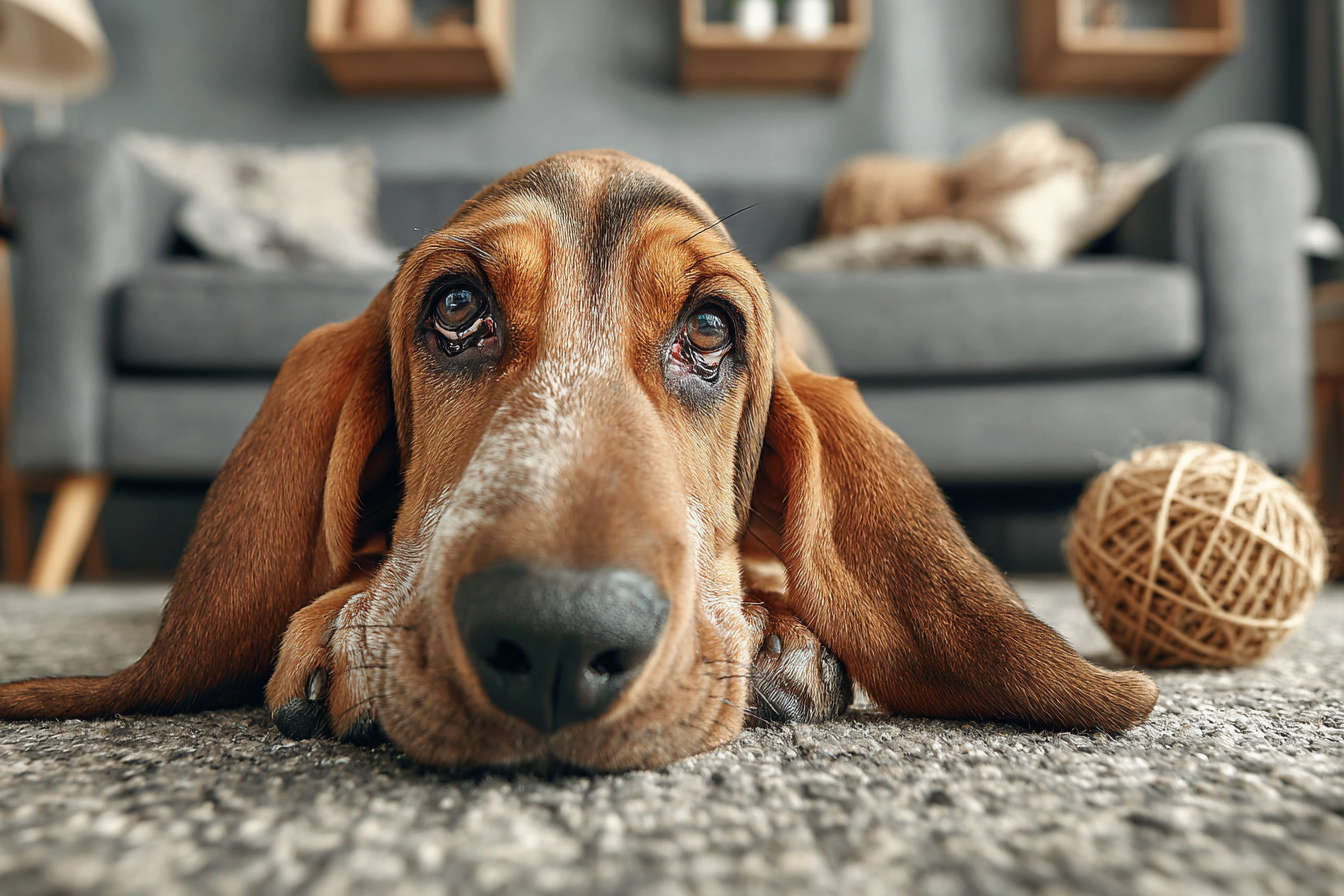Bloodhounds are a unique and fascinating breed, known for their incredible sense of smell and friendly, loyal nature. To ensure your Bloodhound thrives, it’s important to create a living environment that meets their specific needs. From ample space and safety considerations to mental stimulation and temperature control, this guide will help you design the perfect home for your Bloodhound companion.
Space Requirements for Bloodhounds
Bloodhounds are large, energetic dogs that require plenty of space to move around comfortably. A cramped living environment can lead to frustration and behavioral issues. Ideally, a home with a spacious yard or access to open areas is best. They enjoy exploring and sniffing around, so ample outdoor space where they can roam safely is beneficial.
Inside the home, it’s important to provide them with enough room to stretch out and relax. Bloodhounds tend to be quite long, so large dog beds in quiet corners of the house will offer them comfort. While they can adapt to apartment living, owners must compensate with frequent outdoor walks and playtime to meet their physical activity needs.
Indoor vs. Outdoor Living Considerations
While Bloodhounds love spending time outdoors, they thrive best when they are integrated into the family’s daily life inside the home. They are social dogs who enjoy companionship and can become anxious or bored if left outside for too long without interaction.
That said, Bloodhounds have a strong prey drive and are easily distracted by scents, so outdoor areas should be securely fenced to prevent them from wandering off on a scent trail. A safely enclosed backyard allows them to enjoy fresh air and exercise without the risks of traffic or losing track.
Balancing indoor comfort with outdoor freedom is key. Provide cozy indoor spaces for rest and mental engagement, and encourage regular outdoor activities to satisfy their natural instincts.
Safety Hazards to Avoid
Bloodhounds are curious and persistent, so pet-proofing your living space is critical to their safety. Some common hazards to watch out for include:
- Toxic plants and substances: Many household plants can be harmful if ingested. Additionally, chemicals such as cleaning products, antifreeze, and certain foods like chocolate and grapes should be strictly out of reach.
- Unsecured gates and fences: Remember their incredible tracking ability. Even a small opening can become an escape route, so check your yard’s perimeter carefully.
- Sharp objects and choking hazards: Bloodhounds chew and explore with their mouths. Small toys, loose wires, or sharp edges can pose a risk.
- Extreme temperatures: Avoid leaving your Bloodhound exposed to severe cold or heat for long periods without shelter and hydration.
Providing Mental Stimulation at Home
Bloodhounds are intelligent dogs requiring mental as well as physical exercise. Boredom can lead to destructive behaviors, so enriching their environment with stimulating activities is essential.
Consider interactive puzzle toys that challenge their problem-solving skills, treat-dispensing games, and regular training sessions that engage their minds. Rotating toys and introducing new scent puzzles can keep their interest fresh and exciting.
Offering varied daily activities can prevent monotony and promote overall happiness, helping your Bloodhound feel satisfied even during indoor time.
Importance of Scent-Based Activities
Given that Bloodhounds are renowned scent hounds, scent-based activities are incredibly valuable for their well-being. These exercises satisfy their natural instincts and provide excellent mental stimulation.
Simple scent trails you create around your yard or home can turn into exciting treasure hunts where your dog follows a specific scent to find treats or toys. You can also explore organized scent work or tracking classes that hone their abilities and give them a sense of accomplishment.
Incorporating scent work daily not only keeps your Bloodhound mentally sharp but also strengthens the bond between you and your dog.
Temperature and Shelter Needs
Bloodhounds have short coats and relatively loose skin, which means they can be sensitive to extreme weather conditions. Proper shelter and temperature regulation are important for their comfort and health.
In hot weather, make sure they have access to shaded areas, plenty of fresh water, and avoid prolonged exposure to direct sunlight to prevent heatstroke. Cool mats or damp towels can also help them stay comfortable indoors.
During colder months, provide a warm, draft-free sleeping area. While Bloodhounds tolerate moderate cold, they generally prefer cozy environments. Dog beds with insulation and blankets can make a big difference in keeping them comfortable.
Consider the local climate when designing your dog’s living environment, and make adjustments seasonally to accommodate their needs.
Making a Bloodhound Feel at Home
Creating the perfect home for your Bloodhound involves balancing space, safety, engagement, and comfort. By providing ample room to exercise and explore, carefully securing your environment, and offering stimulating scent-based activities, you empower your Bloodhound to be happy and healthy.
Regular interaction, proper shelter, and attention to their natural instincts help build a strong bond and ensure that your Bloodhound thrives as a cherished family member in your home.






